
Blatherskite
: an American duck with a long tail of stiff feathers, a broad bill, and in the breeding male a brownish-red back and sides and a blue bill
Blatherskite is one of the words on this list that truly is an insult, both to humans and to the pitiable duck to which it has occasionally, historically at least, referred. Blatherskite comes from Scots, and is an alteration of blather skate, combining blather (“foolish nonsense talk”) and skate (“a contemptible person”). It first entered English as a word for a person who blathers a lot, then started to be used for blather itself, then again the ruddy duck, which as the quoted text below notes, has picked up a lot of horrible epithets over the years.
A study of local names of American birds leads one to believe that our citizens delight to invent names for the species in which they take interest. … For instance 92 local names are known for a single species of wild duck, the ruddy. In this case as in others some of the names have a touch of humor and local color that renders their study a constant pleasure. The ruddy duck for instance gets such appellations as booby, dumb-bird, and sleepy-head because it is slow to take alarm; and others like hardhead, leather-breeches, and shot-pouch because so often it safely emerges from a perfect rain of shot. It has various derogatory nicknames among the mildest of which are dinky, blatherskite, and fool duck.
— California Fish and Game, Volume 9, Number 1 (January 1923)
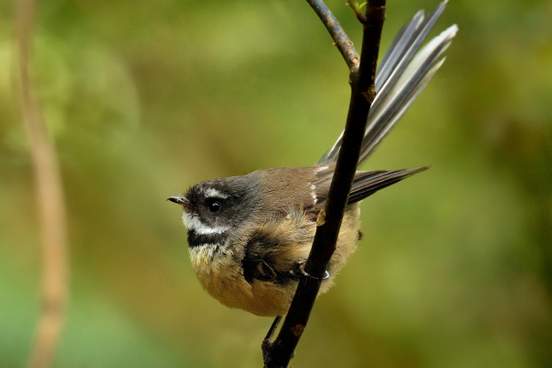
Cranky fan
: a grayish fantail
If you’re a part of any flavor of online fandom, you are likely to be quite familiar with cranky fans. You might even be a cranky fan yourself, sometimes (with good reason, we are certain)! For our purposes however, cranky fan refers to a particular species of fantail, small passerine birds hailing from Australasia, India, and Southeast Asia. The cranky in cranky fan does not mean “irritable” or “short-tempered” but rather “unpredictable,” while fan refers to the bird’s distinctive tail.
The Dusky Fantail is generally known as the “Cranky Fan.” The initial cause of such nomenclature was evidently the fan-shaped tail of the bird (when flying), and also the erratic gyrations of its flight. It is fairly common along the timbered creeks, where it usually builds its characteristic nest with a wine-glass like stem, overhanging the water.
— Clive E. Lord and H. H. Scott, A Synopsis of the Vertebrate Animals of Tasmania (1924)

Dirty Allan
: a jaeger having moderately long, narrow, and pointed middle tail feathers
Oh, Allan, aka parasitic jaeger. We know not whence you received the second half of your name, but we regret to report that you are called “dirty” from your habit “of eating the excrement of smaller gulls.” Allan! Jaeger comes from the German word jäger meaning “hunter,” however, so at least you’ve got jaeger, mister.
On 15th, at Dunnet Head, Gulls leave breeding-places in cliffs. Our correspondent includes both “Chasers” and a “Dirty Allan,” both of which names I held as applicable to the commonest species of Skua…
— John A. Harvie-Brown and John Cordeaux, “Report on the Migration of Birds om the Autumn of 1879,” The Zoologist, May 1880
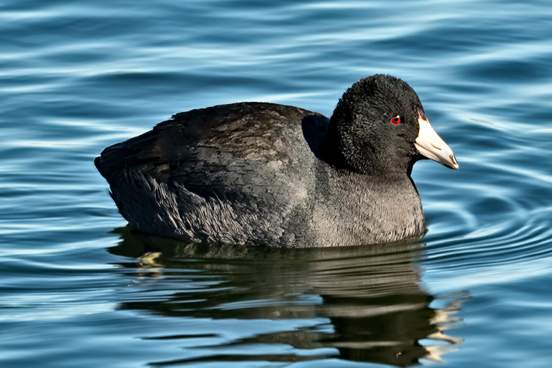
Flusterer
: a common American marsh bird having the bill, edge of wings, and upper tail coverts white, the rest of the plumage slaty and darker on the back than below
To fluster someone is to upset them, to put them in a state of agitated confusion, making one definition of flusterer, “one who flusters,” self-explanatory. But flusterer is also entered in our Unabridged Dictionary as a name for American coot, a bird that has also gone by the names mudhen, blue peter, and others. Just why the American coot was also dubbed flusterer isn’t entirely clear, as the quote below suggests. It’s also not certain how commonly the name flusterer was even applied to the coot, a fact which also seems to fluster Mr. Gurdon Trumbull a little bit.
This species is also credited with the name Flusterer. In Wilson’s Ornithology … the following note appears: “In Carolina, they are called flusterers, from the noise they make in flying over the surface of the water. —A Voyage to Carolina, by John Lawson, p. 149.” Audubon writes: “The appellation of ‘flusterers’ given to it by Mr. Lawson in his History of South Carolina, never came to my ear during my visits to that State.” … Lawson nowhere mentions the term “flusterers” alone, and advances no reason for the naming, and his acquaintance with the bird that always remained in the midst of rivers, and of whose meat he could never learn, was certainly quite limited.
— Gurdon Trumbull, Names and Portraits of Birds which Interest Gunners (1888)

Pettichaps
: a brownish gray European warbler
We wager that there are vanishingly few among us who do not encounter petty chaps from time to time. These petty chaps may even be cranky fans! However, the chaps in pettichaps refers not to “fellows” or “lads” but jaws, and thus pettichaps has been used to refer to several species of petit-billed European warblers, including the chiffchaff and the garden warbler.
The greater pettichaps, or garden warbler… —the true beccafico of the Italians, arrives in our island in April, and departs in September. It prefers wooded districts, large gardens, groves, and orchards, and the outskirts of forests, or plantations.
— Our Songbirds (The Religious Tract Society, London, 1846)
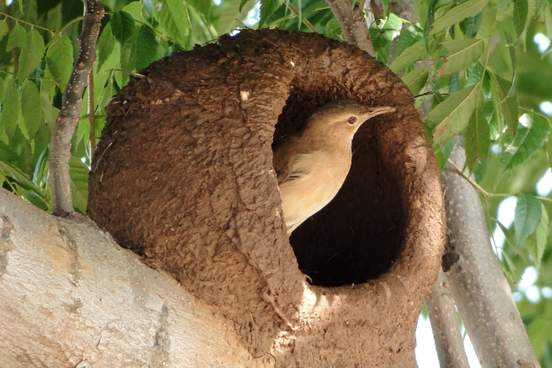
Hornero
: a South American ovenbird
Like honeycreeper from the first installment of Bird Names that Sound Like Insults, hornero “sounds like the perfect term for someone acting skeezy.” So now we have two perfect terms for that. Note that horneros, though also called ovenbirds (due to the shape of their nests), belong to a different family of birds than the familiar, thrush-like (in appearance) warbler that breeds in North America.
The Hornero is one of the avian personalities of Argentina, and is one of the few birds universally regarded with friendly respect… . The stories about it are numerous, one being to the effect that it never works on Sundays, but restricts its building activities to week days.
— Herbert Friedmann, Bulletin of the Museum of Comparative Zoology (Cambridge, Massachusetts, 1927-1928)
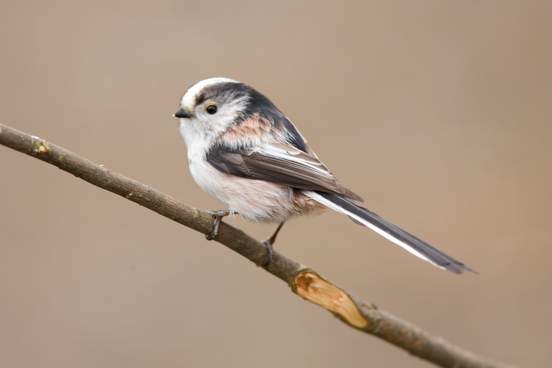
Mumruffin
: a small, long-tailed bird of Europe and northern Asia with a long tail that is related to the bushtits and has black, white, and pink plumage
The origins of mumruffin, as used to refer to the long-tailed tit, are unknown, but the way the word rolls off the tongue suggests it would make a great, playful-if-mild put-down along the lines of ragamuffin. Among the other names given to this bird are bum towel, bottle tit, bumbarrel, and conbottle. (Nota bene: contrary to the quote below, which was written to illustrate logic, not all vireos are blue-eyed. We see you, birders.)
All vireos are blue-eyed, and no mumruffin is blue-eyed; therefore no vireo is a mumruffin.
— Romane Clark and Paul Welsh, Introduction to Logic (1962)
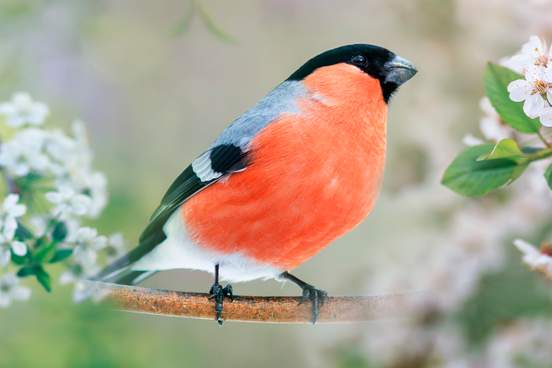
Nope
: a European finch having in the male rosy-red underparts, blue-gray back, and black cap, chin, tail, and wings
Of all the potential, and actual, insults on this list, nope would seem the most brutal, wouldn’t it? Imagine being called nope! Well, if that ever happens to you, you may simply respond, “Thank you, I am a European finch having in the male rosy-red underparts” and then see who has the last laugh. In any event, the noun nope, referring to the bullfinch, is distinct from the adverb nope, and is a lot older to boot. It is thought to be related to a now-obsolete word for the bird, owpe, recorded in the 16th century.
Drayton, in that fine poem with an ugly title, Polyolbion, when describing the song-merits of various birds, employs several popular names which, in Bewick’s time, anyway, were still current in the north: as ‘nope’ for bullfinch; and although in the verses the redbreast, wren, and yellowpate intervene between “the nope,” yet he evidently refers to the bullfinch when he writes “which though she hurt the blooming tree, yet scarce hath any bird a finer pipe than she.”
— Charles G. Harper and J. C. Kershaw, The Downs and the Sea: Wild Life and Scenery in Surrey, Sussex and Kent (1923)

Meatbird
: a jay having gray and sooty plumage and no crest, widely distributed in northern and western North America, ranging southward in the Rocky mountains, and noted for its boldness in stealing provisions from hunters' camps
If you’ve never been graced by the presence of a Canada jay, also known as a camp robber, moosebird, whisky jack, and meatbird (among many other names), the account of G. Eifrig below is pretty much on the money. Many of this feisty omnivorous bird’s sobriquets, including meatbird stem from its boldness and tendency to approach humans for food including, well, meat. If you tire of using meathead or birdbrain when you wish to be a big meanie, we supposed you could conflate the two in honor of sassy ole whisky jack.
A Swiss farmer at Brentha told me, that he had a tame “meatbird” at his place, which would, when called, Hobie, fly on his hand and eat out of it. I told him I would come the next morning and take a picture of it. He remarked it might be too shy for that, or perhaps not come at all in the presence of a stranger. When I arrived there the next morning, the farmer was just out; I entered his little rough log cabin and got some rolled oats or wheat. This I held out in my left hand calling the bird, which had already appeared in a small poplar, sweetly singing all the time. Imagine my surprise, when it flew right straight on my hand, eyed me for a minute, and then commenced eating with all his might. He was so fearless, that I could take a picture of him, manipulating the camera with my right hand. He came repeatedly. Afterwards I also took pictures of him on the farmer’s hand. The pictures of the bird on my hand, however, did not turn out well. The object was too near for a snapshot.
— G. Eifrig, The Ottawa Naturalist (Vol. XXI, 1907)
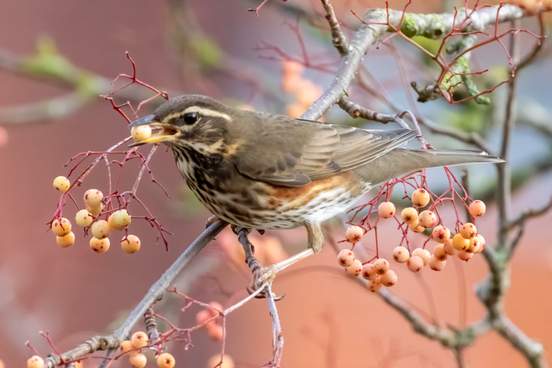
Swinepipe
: a European thrush having the underwing coverts red
Of all the descriptors you could give someone who is—how to put this delicately—unpossessed of a melodious voice, swinepipe has to be one of the harshest, but swinepipe is indeed what avian music critics of yore applied to the bird otherwise known as the redwing or wind thrush. It’s possible that the redwing writes deeply poetic lyrics, however, as compensation.
There is another sort found in England, called the heath thrush, as it builds upon heaths and commons, which is of a darker hue than any of the thrush kind, and by some valued for singing. Another sort called the red-winged swinepipe, or wind-thrush, is the chape and colour very like the song-thrush, but in no esteem for singing.
— Rev. Thomas Smith, The Naturalist’s Cabinet (1806)
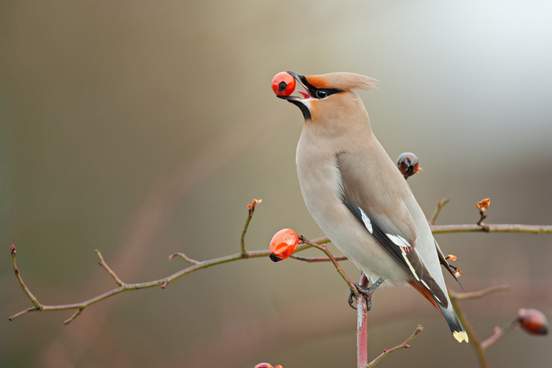
Waxen chatterer
: a large waxwing of northern North America and Eurasia that closely resembles the smaller cedar waxwing
Windbag, blabbermouth, blowhard, prattler, … waxen chatterer? Why not? The English language loves a good word for pompously loquacious types. We suppose the waxen might give pause, of course, but as it applies to the waxwing waxen refers to the red tips of its feathers, which is reminiscent of sealing wax. For an etymological deep dive on how the Bohemian waxwing ended up with the Bohemian in its name, we highly recommend consulting the entry’s Word History section.
One well-known species, the Waxen Chatterer, is a tolerably frequent visitor of England, though it cannot be reckoned among the common British birds. It is also known by the name of the Bohemian Chatterer, the latter name being singularly inappropriate, as the bird is quite as rare in Bohemia as in England.
— Rev. J. G. Wood, Wood’s Natural History (1923)
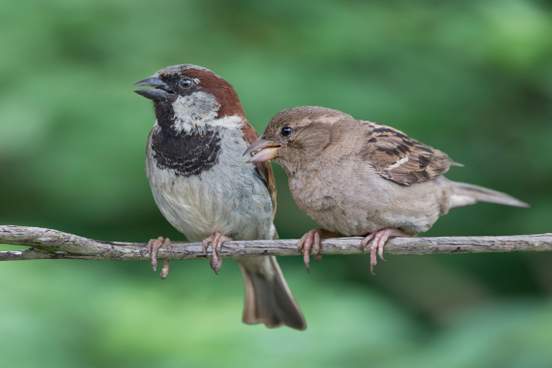
Twit-twat
: a sparrow native to Eurasia that has been introduced worldwide and is found especially in urban and agricultural areas
As for twit-twat, an alternative name for the common house sparrow, that compound is not likely related to any of these twats or twits. Instead twit-twat is a shortened form of twittle-twattle, which arose as a variant of tittle-tattle, which arose as a reduplicated form of tattle, meaning to chatter.
— Mark Morton, The Lover’s Tongue: A Merry Romp Through the Language of Love and Sex (2003)




